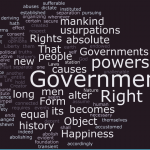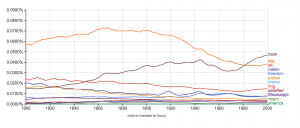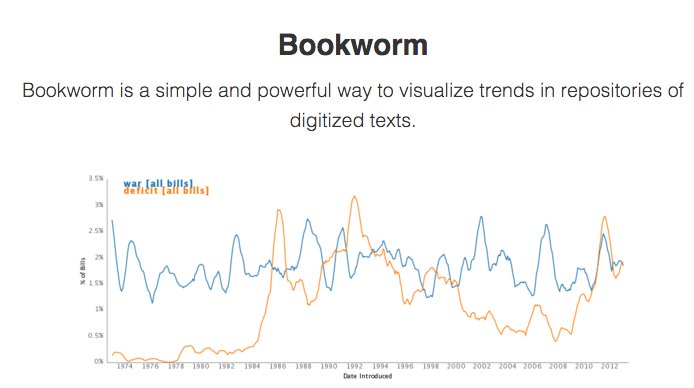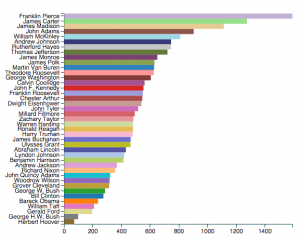Ted Underwood defines distant reading as “an interdisciplinary conversation about methods”, referring to computational methods of literary analysis. Although scholars disagree on the accuracy and dependency of computational analysis, there are various programs that help look at text in a new light by using visual representation (charts, graphs, pictures, etc.). Distant Reading looks at patterns in writing, word frequencies, punctuation and a plethora of other small details of writing and quantifies them for insight on an author’s writing style, the time period, subject and the culture of the place or time. It does not necessarily replace reading: to further understand the patterns it is important to understand the context of the story and characters. Another way to establish that the data being collected is insightful is to look at other works from the time period or place. A pattern discovered in an author’s writing might not actually be a characteristic unique to him/her but rather a norm in the writing style of the period.

This website finds patterns in text and can be used as a part of the rhetoric approach to literature.

Tanya Clement writes about how distant reading can help analyze reading in conjunction with close reading. She argues that both types of reading can be important to analyzing in all four approaches of literature: as a rhetoric, as an art, as a philosophy and as a cultural production. One program that can help in these methods is pictured to the left: a program that finds the patterns in a text and gives insight to the author’s style and meaning. For MLK’s speech this program was both an artistic and rhetoric approach: it showed patterns in writing but these patterns also added to the writing as an art: it highlighted the imagery in the language he used throughout his speech.

Hoover also mentioned using data analysis for various investigation techniques. One of the ways he considered for investigating text is looking at the character’s speech patterns and how a character’s voice may differ from another. Clement explored this phenomenon by studying word frequencies in a text. Most programs that look at word frequency, like Wordle ignore the most common words such as “it” “and” and “the” but Clement wrote about a program that actually included these words to learn about the different classes in the characters in Jane Austen’s novels. To take things a step further, if a scholar finds that an author used a particular word a lot more than he or she used any other such as the case with Wordswith and the word “alone”, he or she may also want to see if this is a particular author’s habit or a thing of the time period. To figure that out, the scholar would have to see the frequency of the word in other books of that time. One way to do this is to use Google ngrams: it shows the frequency of words throughout different time periods.


The final program we looked at was Bookworm’s Culturnomics. These are programs that look at word use in texts, movies, speeches, songs, etc. throughout history. The one I specifically looked at was one that sorted president’s based on their uses of various words in their State of the Union Addresses. It was interesting to look at what different presidents were looking at based on historical events that were happening in the United States and around the world during this presidencies. Comparing it to the most common words in Martin Luther King’s speech demonstrated that the president at the time, Kennedy, was not talking about the same thing despite the movement happening in the country. This program also demonstrated to me the importance of programs that take into account conjugations and words that may have more than one meaning such as “right” vs “rights” or as a direction. a search with only one different letter can give an unwanted result or unnecessary data which effects the accuracy the conclusions drawn from the data.
One reply on “Distant Reading”
Brittany,
I really liked your notion that text analysis can help pinpoint a piece of literature that is from a specific cultural! That is definitely a new way to view digital analysis. Your screengrabs from “Davidic Chiasmus and Parallelisms” is so cool! I really need to take a close look at that! Also, I think your blog had a wonderful flow to it!
Awesome work!